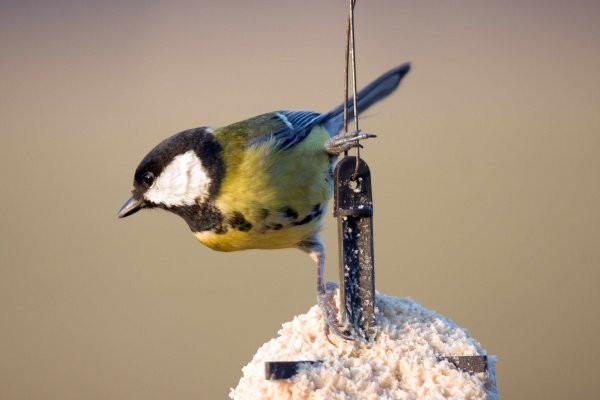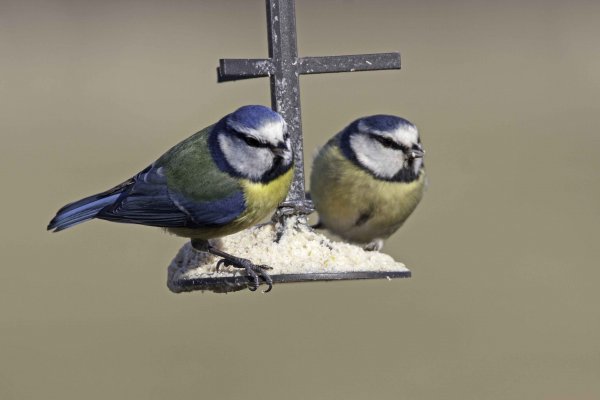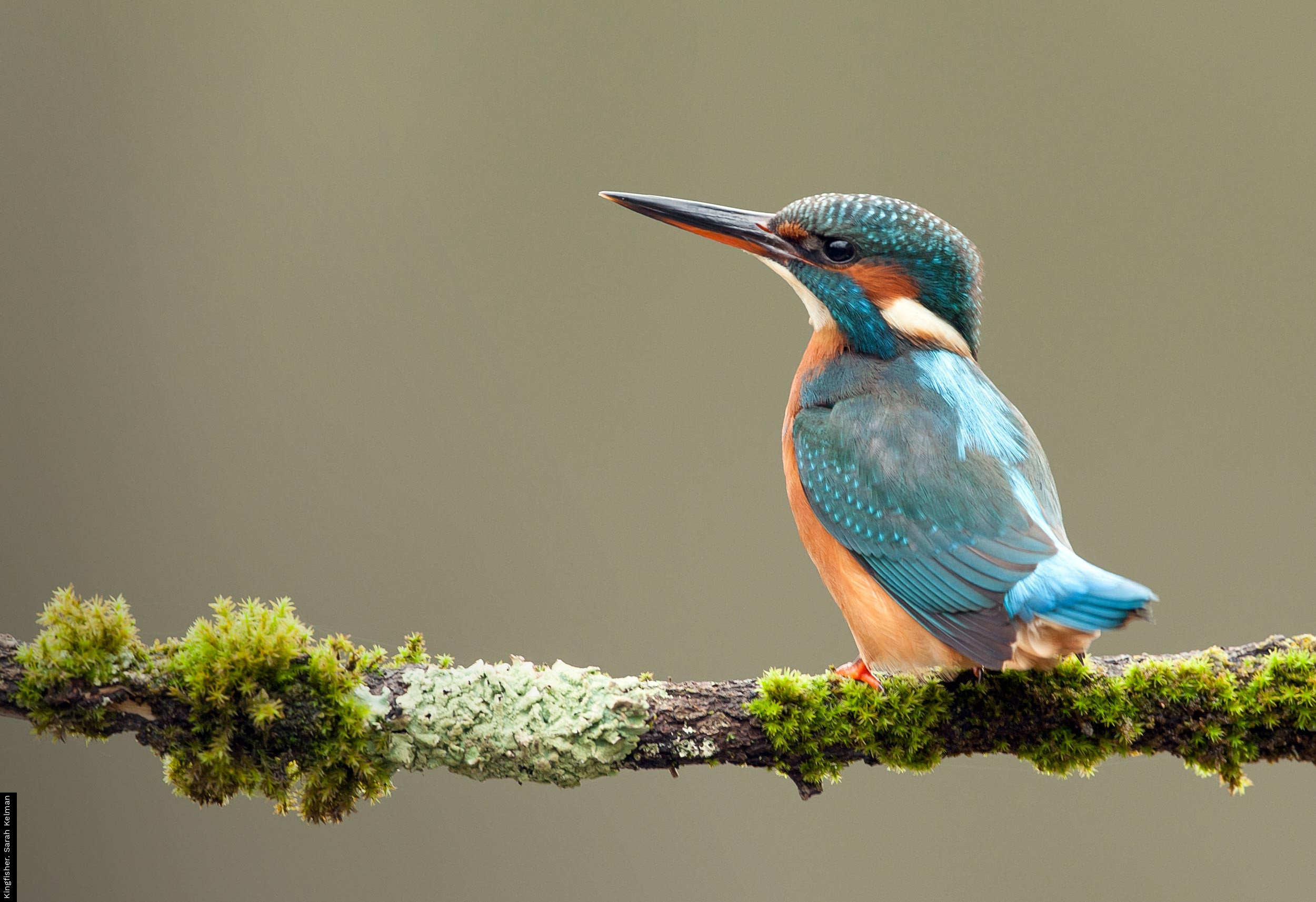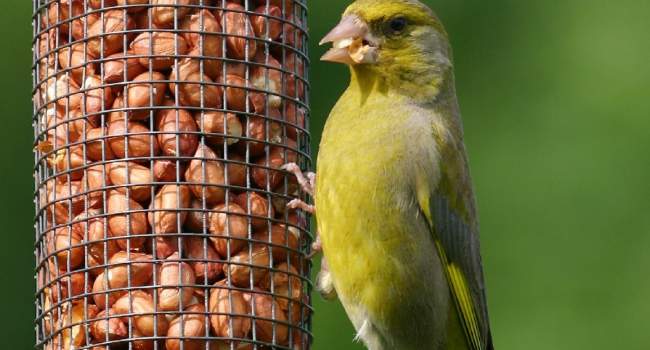Are fatty foods bad for birds?
Fat-based bird foods are provided widely in UK gardens and are thought to help birds to gain a calorific boost in times of need.
Indeed, they attract many species, from swarms of Long-tailed Tits in winter to flocks of young Starlings in summer. But how good are these foods for our garden guests? Three recent studies have produced mixed results.

Feeding garden birds is a popular pastime – around half of people in the UK are thought to participate – and it is an industry that is worth hundreds of millions of pounds every year.
As a result, working out the effects of bird feeding has attracted substantial research interest over recent years. In particular, scientists have been keen to ascertain whether bird feeding really helps birds and, if so, how?
The size of bird populations is governed by two processes: (i) the number of chicks that are reared (i.e. ‘productivity’); and (ii) the survival of birds between successive breeding seasons.
For birds that visit gardens, feeding could affect either of these processes. The latter, unfortunately, is particularly difficult to measure in free living birds because survival and dispersal between breeding seasons are difficult to disentangle. The former, productivity, however, is easier for researchers to get a handle on.
What recent studies reveal
Three recent studies have looked at the productivity of birds that were provided fat-based food supplements:
- Species – Blue Tit and Great Tit.
- Habitat – woodland.
- Food provided – commercial peanut cake (50% beef suet, 50% ground-up peanuts); non-supplemented.
- Timing – food provided during spring and early summer (Mar–July).
- Effect on productivity – fed birds experienced significantly lower productivity than non-supplemented birds.
- Species – Blue Tit.
- Habitat – woodland.
- Food provided – vegetable fat; vegetable fat plus vitamin E; non-supplemented.
- Timing – food provided during winter (Nov–Mar).
- Effect on productivity – fed birds (both of the vegetable fat treatments) experienced significantly lower productivity than non-supplemented birds.
- Species – Great Spotted Woodpecker.
- Habitat – woodland.
- Food provided – suet; non-supplemented.
- Timing – food provided in late winter and early spring (Feb–Apr).
- Effect on productivity – fed birds experienced significantly higher productivity than non-supplemented birds.

Good for some species but not others?
The provision of fat-based bird foods had contrasting effects in these studies. Worryingly, in the two tit studies the supplements resulted in lower productivity, while in the Great Spotted Woodpecker study productivity was increased.
It is possible, therefore, that the effects of fat-based food supplements on breeding productivity could be species dependent. The nutritional requirements of different species will vary as they enter the breeding season and it is conceivable that individual species might find different nutrients limiting under normal (i.e. non-supplemented) conditions.
However, it is impossible to conclude from these studies that fat-based foods are ‘bad’ for tits but are ‘good’ for Great Spotted Woodpeckers. A number of other factors might explain the discrepancy in the findings.
For instance, each study provided slightly different food supplements; these were available over different months of the year; and the studies themselves encompassed different years/lasted for different numbers of years.
To investigate further whether fat-based bird foods affect productivity differently in different species, the same foods need to be provided to different species in the same locality and over the same period of time, with the nests of both species monitored.
Important unknowns
There are two particular ‘unknowns’ that are important to consider. The first concerns matters outside of the breeding season. These three studies highlight that fat-based bird foods can affect breeding productivity – but how might survival between breeding seasons be influenced by such offerings?
Unfortunately, we do not yet know. It is conceivable, for instance, that fat-based bird foods might enhance survival prospects of tits through summer, autumn and winter, despite reducing breeding productivity.
Plummer et al. (2013) suggest that winter feeding might have enabled poorer quality individuals to survive into the breeding season and that this, in turn, might have resulted in the reduced productivity that they observed.
The second major unknown is how well the findings of these studies translate to garden feeding. You’ll notice that all three studies took place in woodland. This is no coincidence. Almost all food supplementation studies have taken place in non-urban environments and, to the best of our knowledge, no comparable research has been conducted in gardens.
Why is this?
The answer is because research in gardens is logistically very difficult. Gardens are privately owned and so it would take considerable levels of public engagement and cooperation in order to conduct such work. Moreover, it is difficult to control the amount and types of foods being provided. Instead, it is easier to conduct feeding studies in non-urban environments.
This, however, comes at a price when trying to interpret what the results mean for garden feeding. For instance, in broadleaved woodland – the habitat in which Harrison et al. (2010) conducted their study – caterpillars tend to be abundant, helping adult Blue Tits and Great Tits to rear more young than their urban-breeding cousins.
By providing peanut cake in woodland it is possible that the balance of this ‘optimal’ breeding environment for tits might be upset in some way. In gardens, however, where caterpillars are generally scarcer, providing peanut cake might give adults more of a welcome boost.
Indeed, it has been suggested that food supplementation has a larger positive effect on breeding success when natural conditions are otherwise poor. If garden/urban areas represent poorer breeding habitat than non-urban areas, as seems to be the case in many species, we might expect the effects of food provision to be quite different.
So, should we feed fatty foods to garden birds?
Let us weigh up the evidence that we have. In these three studies alone, fat-based foods were found to reduce productivity in two and increase productivity in one. For a number of reasons, however, these studies are not directly comparable – slightly different foods were provided in each, the months in which these foods were available were not identical, nor were the years.
Perhaps timing is everything. For instance, year-round feeding of fat-based foods might have quite different effects to its provision in specific seasons. Perhaps some fat-based products are ‘better’ or ‘worse’ than others. Only future work can help us to explore these possibilities.
It is also worth remembering that each of these studies was conducted in non-urban habitats and focused on productivity alone, without information about subsequent survival between breeding seasons being examined.
On this basis, it is hard to argue that people should stop providing fat-based foods for birds in their gardens. Indeed, over the course of a year it is possible that such foods might have a positive overall effect on bird populations.
However, the findings of Harrison et al. (2010) and Plummer et al. (2013) raise genuine cause for concern and should provide a focus for subsequent research. How does the provision of fat-based foods in gardens/urban areas affect productivity?
Can we begin to understand how subsequent survival is influenced by these foods? How do these processes vary between species? Such questions are very difficult to answer and will require lots of public engagement, time and research funding to address.
But doing so is important. Feeding wild birds is the most regular interaction that most people have with wildlife and research shows that when natural foods fail many birds turn to garden feeders for help.
Feeding studies, such as the three described here, are helping to refine the questions but a shortage of garden/urban based research is leaving us notably short of answers. Only through such research will we gain more confidence in recommendations about when and what to feed our garden birds.
Buy bird food and feeders from a reputable company
BTO is proud to work in partnership with leading bird-care company Vine House Farm, with the shared aim of making a positive impact for birds.
- Please visit their website for high-quality nest boxes, bird houses, foods, feeders and more.
Related Publications

Does food supplementation really enhance productivity of breeding birds?
Oecologia

Winter food provisioning reduces future breeding performance in a wild bird
New evidence of the impacts of winter feeding on Blue Tit breeding success
Scientific Reports
Wild bird populations are generally thought to benefit from being given additional food in winter but our understanding of the effects of such food provision is incomplete. The results of a new study, carried out by researchers at the University of Exeter and the BTO, has found that feeding wild Blue Tits in winter resulted in less successful breeding during the following spring.
The research, just published in Scientific Reports, revealed that woodland Blue Tits that were provided with fat balls as a supplementary food during the winter months went on to produce chicks that were smaller, of lower body weight and which had lower survival than the chicks of birds that did not receive any additional food.
More Details





Share this page